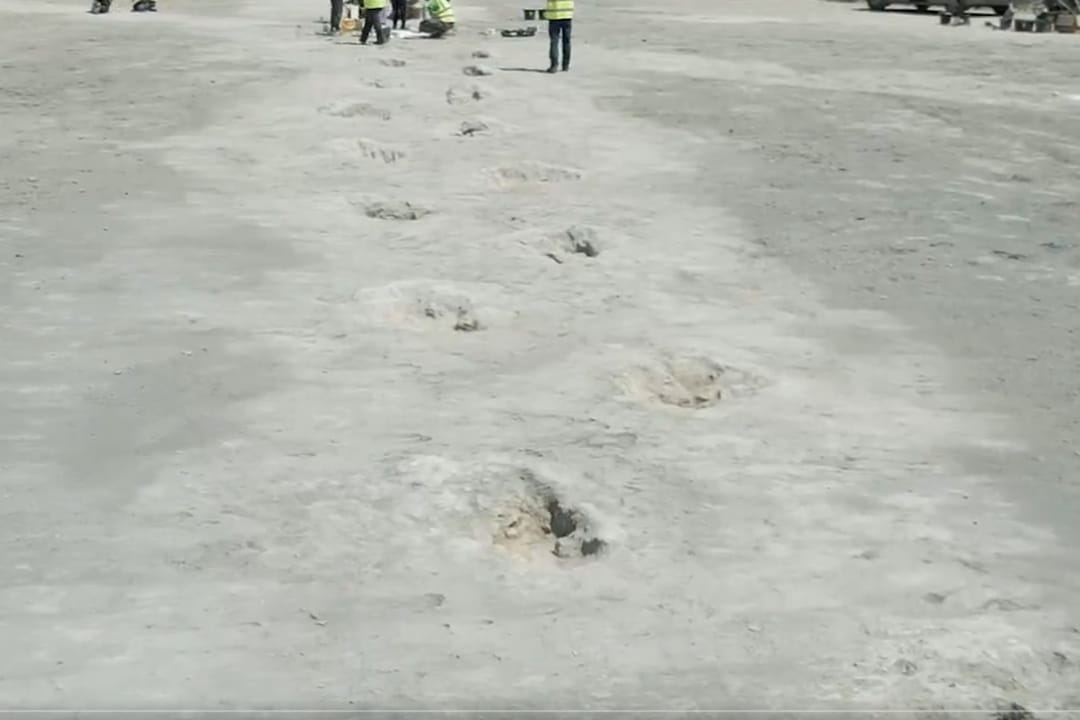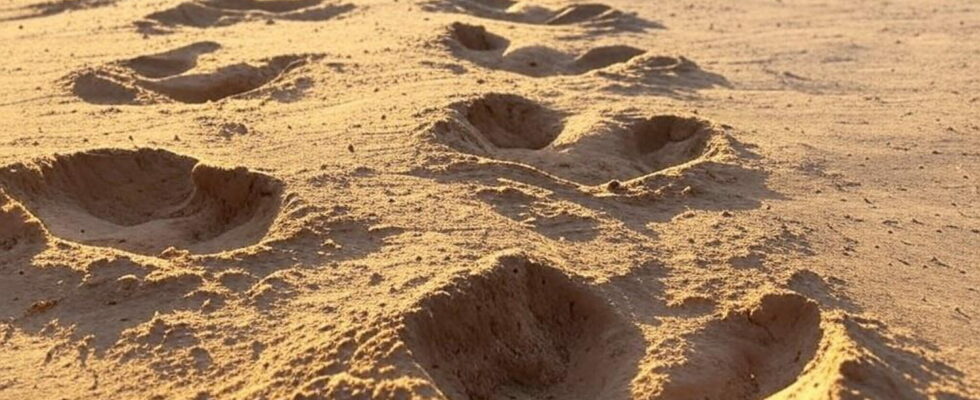Archaeologists have discovered more than 200 new dinosaur footprints. They question a lot of things.
Although they became extinct around 65 million years ago, new discoveries about dinosaurs continue to emerge. Nearly 200 footprints have been discovered at Dewars Farm quarry in Oxfordshire, southeast England, it has been announced Oxford University. These footprints are believed to be those of five dinosaurs, left 166 million years ago, during the Middle Jurassic period. “It is very rare to find such large numbers in the same place, and to discover such extensive tracks,” the longest covering 150 meters, Emma Nicholls, a paleontologist from the University of Oxford, told AFP. . This site was then nicknamed “the dinosaur highway”.
The first prints were discovered last June by Gary Johnson, a worker who was removing clay from this quarry with a backhoe. “I realized I was the first person to see them, it was surreal,” he told the BBC.
The University of Oxford and Birmingham University then oversaw excavations at the site. It is an ancient warm water lagoon, in which dinosaurs left their footprints in the mud. Scientists still wondered how the traces managed to remain visible. They developed a hypothesis: a storm could have deposited sediment on the prints, freezing them.

Four of the five tracks would have belonged to sauropods, probably of the Cetiosaurus species. They are long-necked, herbivorous dinosaurs. Their footprints are larger than those of elephants: they measured 18 meters long. The fifth could be that of a megalosaur, given the three claws on the ground. This carnivorous dinosaur can reach three meters in height and, unlike sauropods, it walks on only two legs.
Among these footprints, a particular aspect intrigued archaeologists: “traces of carnivores and herbivores crossing paths”, raising “questions about a potential interaction between the two species and the content of these interactions”. The search will continue, with archaeologists believing there may be other footprints just waiting to be discovered.
In 1997, specialists had already unearthed several in the region making it possible to assess which dinosaurs had been present in the United Kingdom during the Middle Jurassic, but new technologies allow a more in-depth study of the new site.
